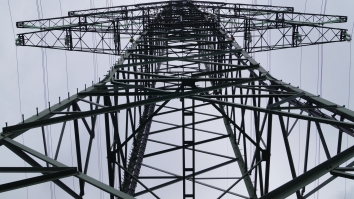A new look at portfolio investing in renewables
By William ByunLike a certain iconic dessert advertisement, “Nobody doesn’t like renewables”. Yet, renewables have been difficult to invest in for a variety of reasons. From the perspective of publicly traded portfolio investors, renewables investments in emerging markets has been especially tricky given the particular nature of renewables in terms of being narrowly associated with characteristics tied to size, location, climate, etc.
With the new trends and developments in fintech though, new investment funds are revisiting emerging market renewables, and with their new tools and approaches, may be finding promising pathways for investment.
The litany of usual grouses can seem multi-layered when it comes to renewables in emerging economies in Asia. It’s so narrowly balanced – more cloud cover here… less wind on that ridge… crops yields (for biomass) were less due to this weevil, etc. It’s in difficult places – laws are not ripe in country X, corruption is a bugbear in country Y, the financial and currency infrastructure in country Z is too rickety, etc. And the nail in the coffin to top it off in the oft-stereotyped macho world of finance – It’s too small.
As a result, what investments that have been channeled in the renewable power in emerging Asia has often been more a series of seemingly disconnected individual initiatives or driven by public-sector policy drivers. Public equity was often restricted for all of those reasons noted above, and by additional limiting factors such as listed exchange liquidity, lack of share research, and investor mandate restrictions to global indexes such as the MSGI.
For those public equity plays which may be possible with those thickets though, the investment options were also limited. Some of the larger national utilities and regional conglomerates have engaged in renewables, but such renewables had to be subsumed within the wider corporate balance sheet rather than stand-alone as an independent investment focus.
As a result, for such public equity investment fund managers, there wasn’t really a readily available supply of publicly traded shares in renewable energy plays aside from those rolled within such larger utilities or conglomerates, in which case the investment dynamic from a renewables play was diluted to being a footnote within such larger utility.
Passive investors were then generally limited to private equity plays. In turn, companies and their private investors in renewables could not count on exits from going public, thereby further dampening the investment positives of renewables plays.
A new hope
Globally though, investment options and returns are low despite how enticing putting money in a bank and getting less than 1% may swoon the hearts of investors. As a result, with new financial technology tools and approaches, some public equity funds are now revisiting areas of investment alpha (variable upside returns) including for emerging market counters, renewables, and, yes, even “small” micro-caps.
Taking a step back – how does this landscape then look like? In recent decades, emerging markets do tend to outperform more established markets and smaller plays do have more dynamic behaviour too. Aside from all of the other issues, some groundwork problems have been with the lack of company research available, the trustworthiness of public data, and liquidity in small stocks.
Traditionally, the approach had been to have a massive ground game with lots of local bodies on the ground to develop and manage local information to be able to react as quickly to real time as possible. However, it then became a cost/benefit balance to handle such heavy costs.
With fintech trends such as mechanisms and strategies deploying greater big-data management and trends and factor mining, it is increasingly possible to reduce reaction time in backwards information assimilation to serve as a proxy of forward projection. In other words, if you can understand and get comfortable in the trends and ways local information moves and can see it being digested quickly enough to be able to react “backwards” to it quickly too – then it’s as if you were able to know things and make projections going forward in the first place.
Whilst this note is not intended to delve into the fintech, a rough analogy may be as if a basketball player – if he is good enough to read the eyes of the player he is defending – can get a good sense of where a play is going even without necessarily knowing how the other team is running a set play. From results thus far from such new public equity funds running such strategies, performance has outpaced other seemingly more “secure” sectors even.
So where does it leave renewables? Well, it is in emerging Asia and it is usually small, but those could then be seen as enhancing the strong alpha dynamics, rather than seeing those as regretful stumbling blocks. For companies engaging in renewables or even large utilities/conglomerates in the renewables space too, it means renewable energy – as itself – public equity may increasingly be a realistic option.
























 Advertise
Advertise







